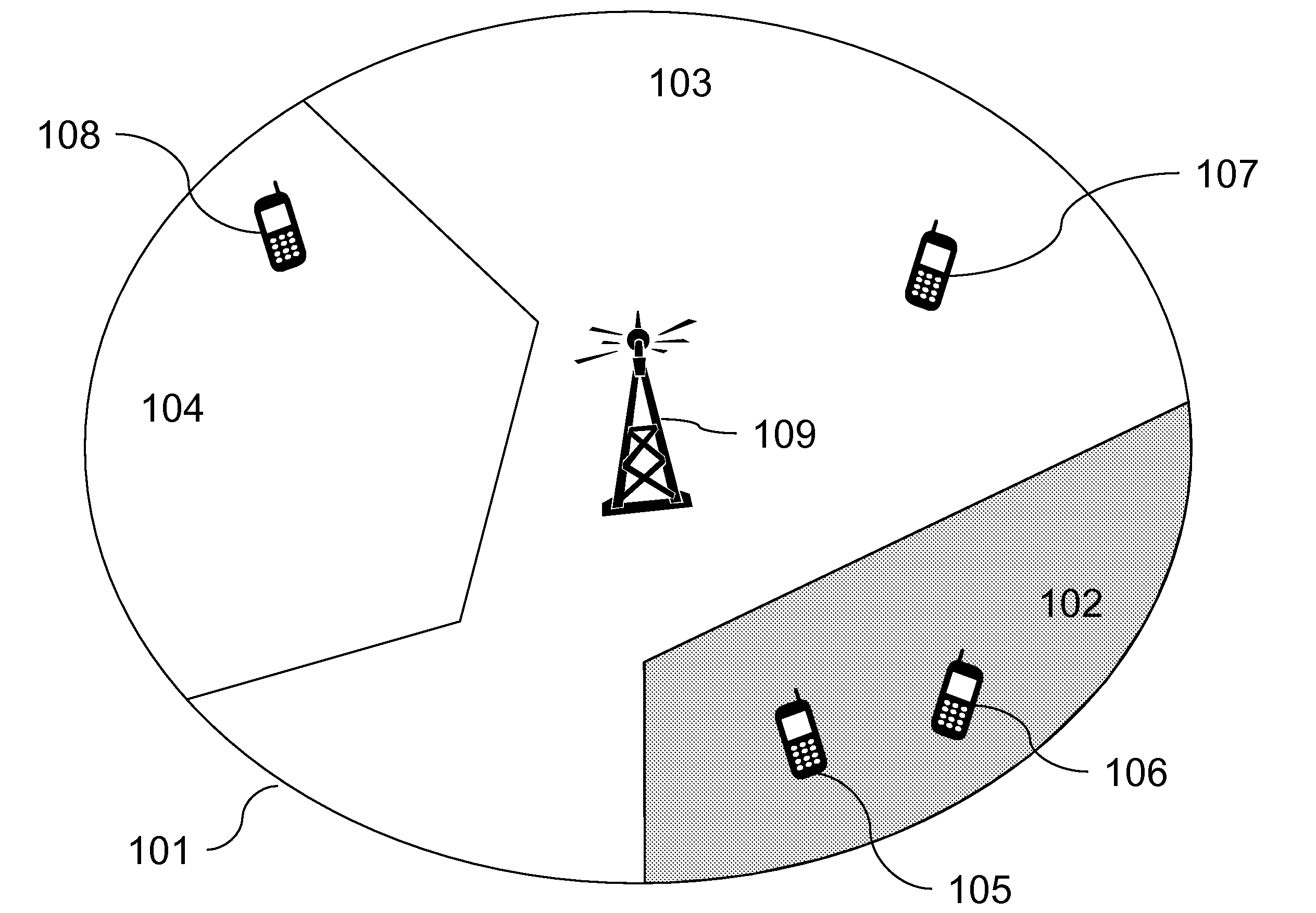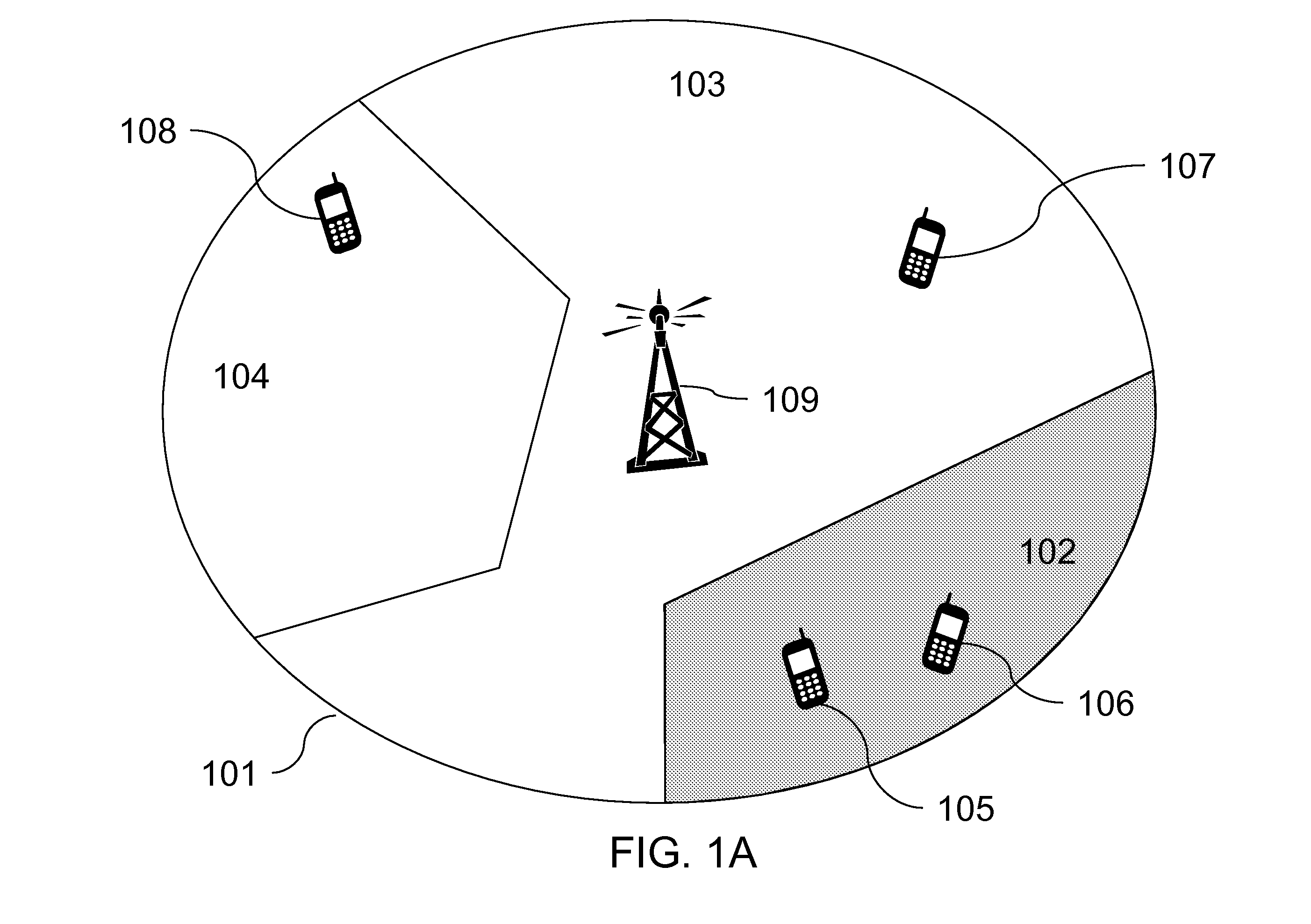System and Method for Implementing Location-Based Content Restrictions in a Mobile Video Broadcast Environment
a video broadcast environment and location-based content technology, applied in the field of video broadcasting, can solve the problem of not wanting the liability of such content being viewed on a handheld terminal receiver
- Summary
- Abstract
- Description
- Claims
- Application Information
AI Technical Summary
Benefits of technology
Problems solved by technology
Method used
Image
Examples
Embodiment Construction
[0015]Referring to FIG. 1, a normal location-based restriction mapping of a video broadcast region 101 is depicted and, as shown, this broadcast region covers three distinct zones (102, 103 and 104). Each of these zones corresponds to a particular geographic area within broadcast region 101, which could, for example, be three distinct neighborhoods, towns, states, countries, or other areas defined by arbitrary borders. The signal being transmitted from transmitter 109 radiates throughout broadcast region 101. However, it is desired that the particular content carried by the transmitted signal be rendered only by terminals located in zones 103 and 104, and that terminals within zone 102 be prohibited from rendering that content (zone 102 is blacked-out, as indicated by the shading in the FIG. 1). The need to black-out a particular reception zone may arise from any arbitrary regulatory or commercial limitation, such as a contractual obligation to the content owner. For purposes of thi...
PUM
 Login to View More
Login to View More Abstract
Description
Claims
Application Information
 Login to View More
Login to View More - R&D
- Intellectual Property
- Life Sciences
- Materials
- Tech Scout
- Unparalleled Data Quality
- Higher Quality Content
- 60% Fewer Hallucinations
Browse by: Latest US Patents, China's latest patents, Technical Efficacy Thesaurus, Application Domain, Technology Topic, Popular Technical Reports.
© 2025 PatSnap. All rights reserved.Legal|Privacy policy|Modern Slavery Act Transparency Statement|Sitemap|About US| Contact US: help@patsnap.com



